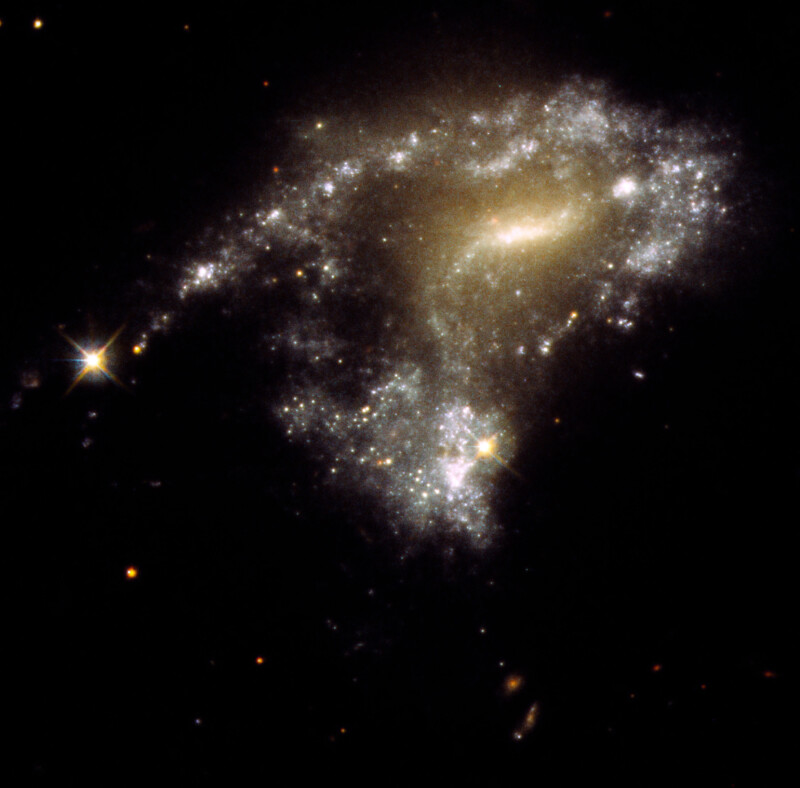A Stellar ‘String of Pearls’ is the Center of Hubble’s Latest Photo

When galaxies collide, they don’t necessarily destroy the stars within them. As NASA explains, contrary to popular belief, such a galactic “rough-and-tumble” actually triggers the generation of new stars and — presumably — planets.
In this latest photo captured by the venerable Hubble Space Telescope, 12 interacting galaxies that NASA describes as having long, “tadpole-like tidal tails of gas, dust, and… stars” show how the gravitational pull of how interacting galaxies can warp and distort the traditional pancake shape into an S-shape.
Hubble’s sensor was able to uncover 425 clusters of stars that were generated by the interaction and each cluster contains as many as a million newborn stars.
“When galaxies interact, gravitational tidal forces pull out long streamers of gas and dust. Two popular examples are the Antennae and Mice galaxies with their long, narrow, finger-like projections,” NASA explains.
As the gravity of the galaxies collides, it stretches out each through a tug-of-war of forces. Before they came into contact, NASA suspects that the clouds of molecular hydrogen within them would likely have remained inert. However, when “jostled and bumped” during close encounters like this, the hydrogen compresses and creates what NASA describes as a firestorm of star birth.
“It’s a surprise to see lots of the young objects in the tails. It tells us a lot about cluster formation efficiency,” lead author Michael Rodruck of Randolph-Macon College in Ashland, Virginia says. “With tidal tails, you will build up new generations of stars that otherwise might not have existed.”
Astronomers and scientists aren’t sure what will happen with these strung-out star clusters after this point. It’s possible that they will evolve into globular star clusters like those that orbit outside of the Milky Way. It is just as likely that they may disperse and become wandering stars.
“This string-of-pearls star formation may have been more common in the early universe when galaxies collided with each other more frequently. These nearby galaxies observed by Hubble are a proxy for what happened long ago, and therefore are laboratories for looking into the distant past,” NASA says.
Image credits: NASA, ESA, STScI, Jayanne English (University of Manitoba)